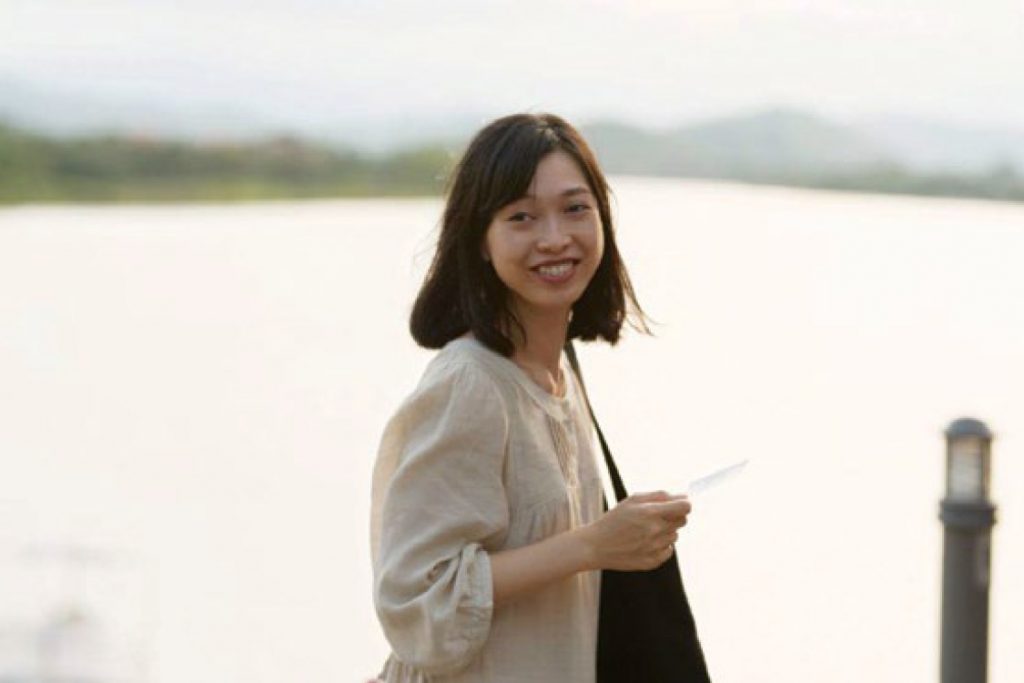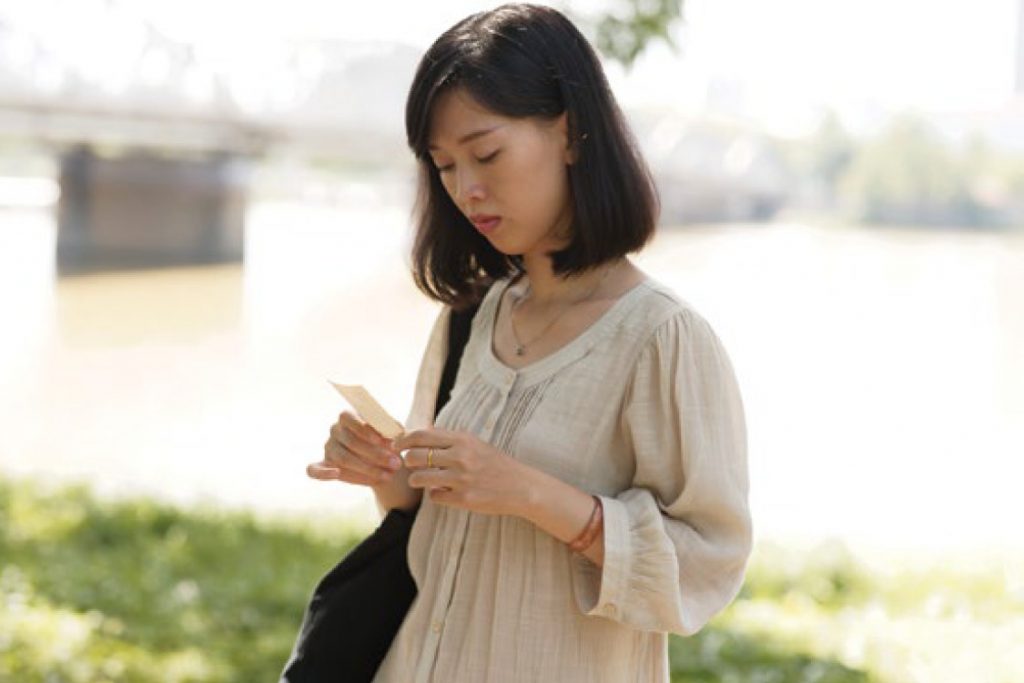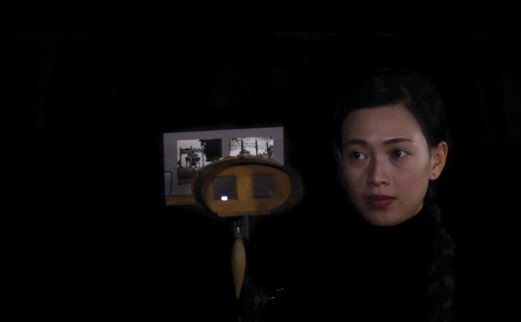
With increasing frequency, classes and researchers visit the Betsey B. Creekmore Special Collections and University Archives to engage with the UT Libraries’ collection of artists’ books.
… Generally speaking, an artist’s book is a work that’s been inspired by or modeled after the properties that we usually associate with a book: paper, print, a binding, and information presented in a meaningful sequence from one page to the next. However, that definition does little to convey the diversity of shapes, sizes, structures, materials, techniques, and ideas that artists’ books embody, employ, and express.
— “’Is that really a book?’—Artists’ Books in Special Collections,”
by Allison McKittrick. Read the full article, along with the following
interview, in the Library Development Review, 2019–2020.]
Following is an interview with artist Quynh Lam, a UT graduate whose artist’s book resides in our Special Collections.
In Her Own Words: An Interview with Artist Quynh Lam
Quynh Nguyen, a Fulbright Scholar, is pursuing a Master of Fine Arts in painting and drawing at the University of Tennessee. In 2016, Nguyen (whose professional name is Quynh Lam) created a limited-edition artist’s book, enduring ephemeral, for the Vietnam Artists Book Project. Only 20 copies were printed, and she has donated one copy to the UT Libraries’ special collections. Her work is included in another limited-edition artist’s book, Saigon Artbook 6, part of an ongoing series that promotes the work of young Vietnamese artists.
Nguyen had an amazing year in 2019. She was one of 15 emerging young artists to receive an Art Future Prize and an invitation to exhibit her work in Taiwan; she was selected for the Riedel Fellowship and a residency at the Ragdale Foundation, a nonprofit artists’ community; and her work appeared in several exhibitions and magazine articles.
Nguyen is a graduate of the Fine Arts Association of Ho Chi Minh City and the University of Architecture of Ho Chi Minh City. Her recent work — often incorporating organic pigments or natural materials — explores historical memories and the link between women and nature.
Tell us a bit about yourself and what you do.
My full name is Nguyễn Đức Diễm Quỳnh, but my professional name is Quynh Lam. I am a visual artist from Saigon, Vietnam. I always wanted to be an artist since I was little — that’s why I graduated from the Fine Arts Association of Ho Chi Minh City in 2007. However, it’s very hard to be an artist in the postwar era. I attended the University of Architecture of Ho Chi Minh City. After graduating in 2012, I worked at an architecture firm called DWP (Design Worldwide Partnership) to have a place for me to develop my creativity — because the whole time I desired to create art. After more than five years working there, I gained a lot of experience in space, scale, lighting, and materials in architecture. All of those skills support my art today.
What brought you to UT?
In 2017, I was granted the Fulbright Scholarship from the US government and I am now pursuing an MFA in studio art at UT School of Art. During my interview with the Fulbright program, I shared how I have been influenced by the spirit of Black Mountain College. It is interesting to me, since I was born and grew up from South Vietnam, that I am now currently living and working in the American South.
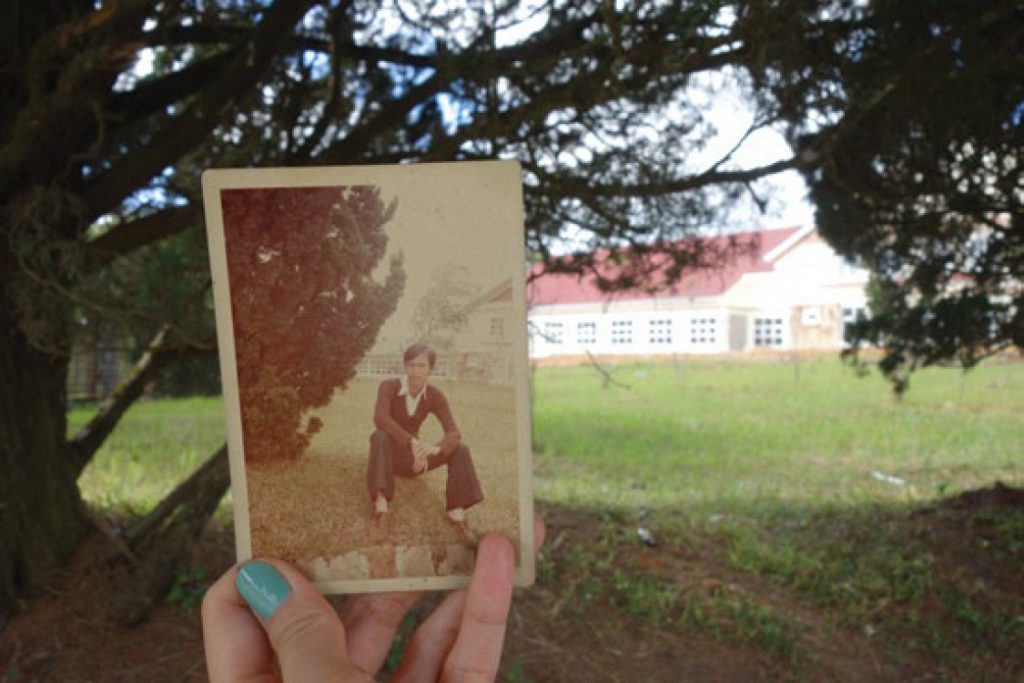
What’s essential to your work as an artist?
Most of my work is about dealing with memory, invisible traumas, and addressing the relationship between history, nature, and science. I was influenced by my family’s tradition of photography, so I continue this tradition by working with conceptual photography and archival projects. All my materials are my family’s old photographs and the plant matter surrounding me.
What role do you see art and the artist playing in our society?
For me, art has to engage with society and reflect aspects of our daily life. An artist’s role is to create work and let the work speak by itself, and the audiences will contemplate the work by themselves.
Will you talk about the themes in your artwork in general?
My art revolves around historical memories through postwar trauma and the cultural link between women and nature. Because of my family’s complicated history of migration, it motivated me to examine the connections between my history and the present while living in the two cultures. I work to incorporate various media: historical documents, performance, site-specific installation, painting, and video art.
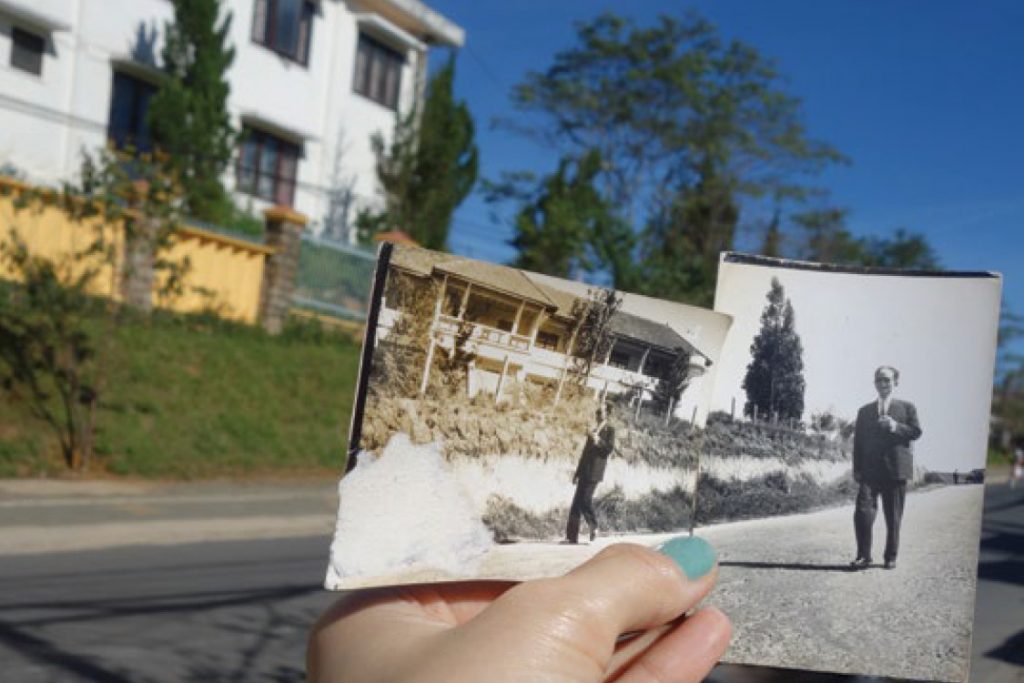
What research, if any, do you do before you begin a piece like an artist’s book?
I remember when I was a child, I found a treasure chest in my uncle’s room. After many times I persuaded him to open it for me, and it was filled with old family photos and letters from my relatives.
My family moved from the North to the South before the war in 1954. I know nothing about my Northern relatives. My parents did not want to be reminded of the past. Most Southern Vietnamese families want to forget this traumatic past.
As a Chilean filmmaker indicated, “A country without documentary films is like a family without a photo” (Patricio Guzmán).
This heartfelt quotation reminds me of a Vietnamese immigration story.
I had the idea to make an artist’s book because I can carry it like a family photo album, and I can bring it overseas to share and understand more about my origin, my identity, and the historical context at that time.
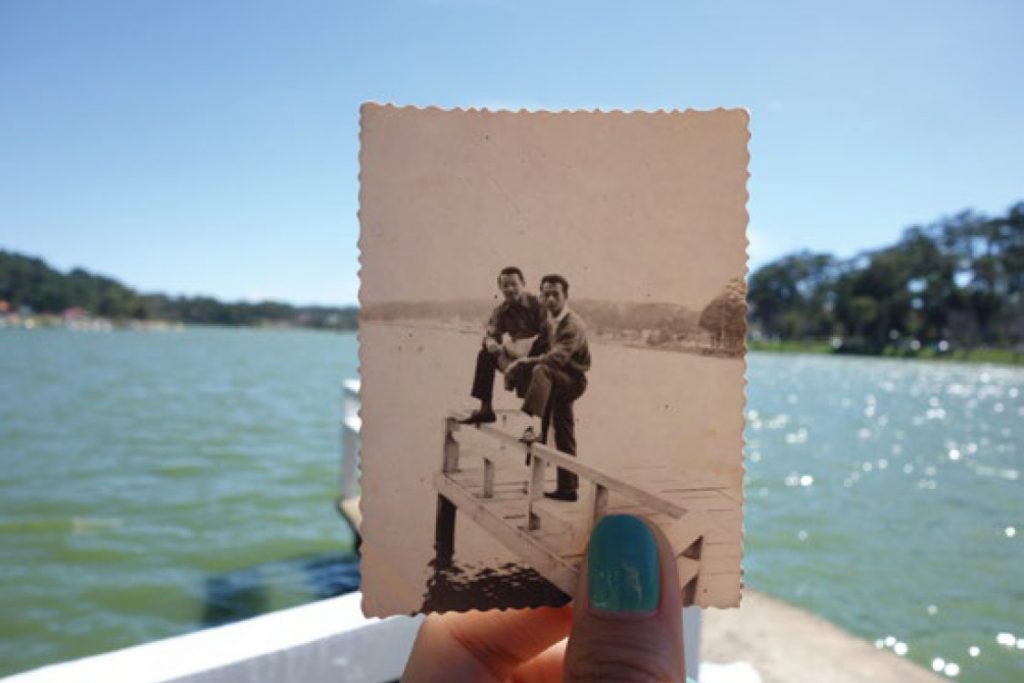
What did your process in physically creating your artist’s book look like?
I simply think I made this photo album for myself, and I didn’t care how long it would take to complete it. The specific artist book that I donated to the university centers around the city of Dalat.
I vividly remember my first time visiting Dalat in early 2006. I found my grandparents’ old house in Hoa Binh area in the city center. It hurt me that I couldn’t go inside anymore. That house belonged to someone else when my grandparents migrated during the war.
I returned to Dalat in December 2006 with a desire to take a document photo of that house. Unfortunately, the house was destroyed. A corporation bought that house to build their business.
It took me 10 years to collect many other missing photos of my family in Dalat to complete the book. During one of my last trips, in December 2015, I had the chance to stay longer in Dalat, to communicate and interact with local people, and I gained much more through conversation and sharing stories.
I felt that I got more familiar with the environment, and the ambiance there was so close and dear to me. When I retook the photo series during that visit, I felt there was more sentimentality in the pictures versus when I first took them in 2006. I was more of a tourist at that time.
Once I reworked my photos, I started to edit and design the layout for my own artist book in 2016. It’s been very enjoyable to explore Dalat for a decade.
What prompted your decision to donate your artist’s book to UT?
It was a great opportunity for me to visit UT Libraries Special Collections and to go through many other amazing artist books. I have always loved the idea of creating an artist book. I am pleased to contribute one as a small part of this collection, which will also mark my time at UT.
I published 20 copies of that particular artist book and it was collected by many art collectors, researchers — for instance, Yamamoto Gendai (Japan), Bay Library (Netherlands), Salon Saigon, Dia Project (Vietnam), UCLA library (USA), etc.
The one given UT Special Collections was actually my last copy.
What advice would you give an artist who is interested in creating an artist’s book at UT?
For me, creating an artist book amounts to telling your own story, reflected in choosing which genre to create.
It’s also about collaboration, like the way I discussed with the publisher how I wanted my book printed, or deciding to pick which type of paper, and the test prints before I was satisfied with my final version.
I would tell any artist working on an artist book to do it patiently, over and over, no matter how long it takes to produce.
photographs courtesy of Quynh Lam
